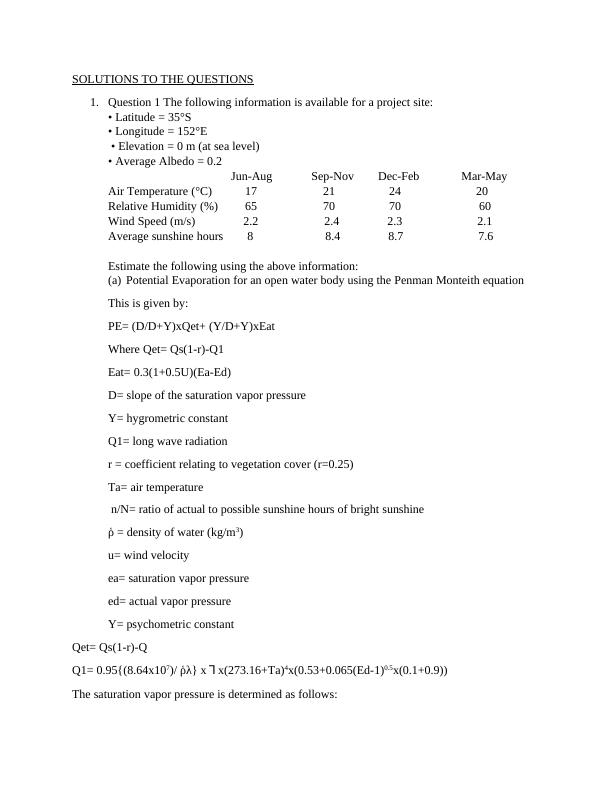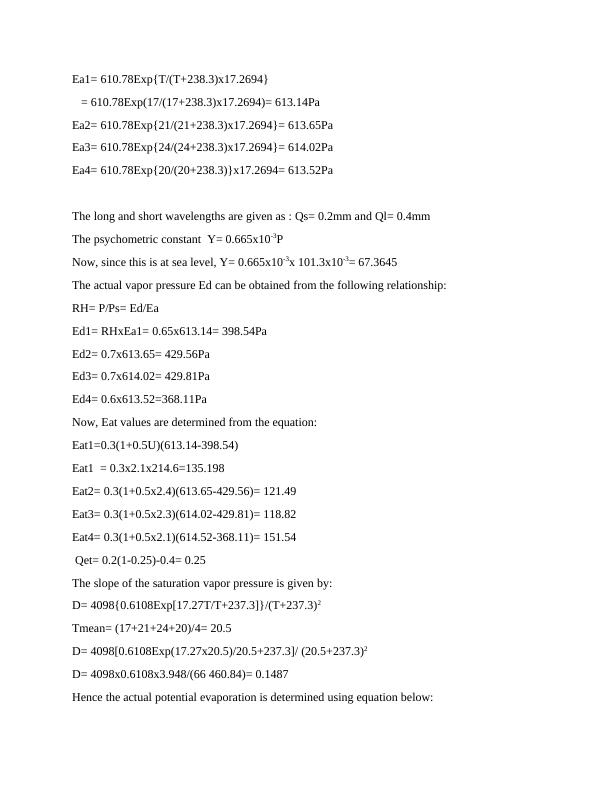CVEN9625 - Fundamentals of Water Engineering
5 Pages1069 Words40 Views
University of New South Wales
Fundamentals of Water Engineering (CVEN9625)
Added on 2020-03-04
About This Document
This solution provides an introduction to water engineering with a focus on hydrology and hydraulics. Topics discussed include; Hydrology: Australian hydrology, catchment processes and energy cycle, meteorological and hydrological measurement techniques, evaporation estimation, design storm and flood estimation. To give you an understanding of the properties of fluids, hydrostatics and the principles of fluid flow based on mass, energy and momentum.
CVEN9625 - Fundamentals of Water Engineering
University of New South Wales
Fundamentals of Water Engineering (CVEN9625)
Added on 2020-03-04
ShareRelated Documents
End of preview
Want to access all the pages? Upload your documents or become a member.


